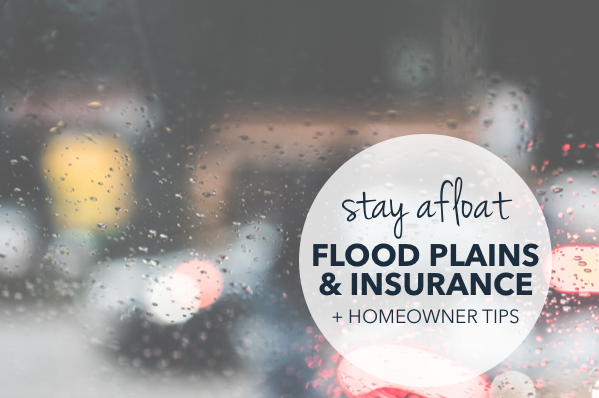
The Shenandoah Valley — and many spots in Rockingham County, in particular — has seen its fair share of flooding. Ever hear of the massive flood that swept through our area back in the 1990’s? Because of the devastation that took place because of excess rainwater, better irrigation drainage systems have been put in place, dikes have been constructed, and countless other measures have been accounted for since then in our beautiful piece of the Valley.
So, with all those safeguards in place, do you really need to care about what flooding could do to your property? If your home is in the flood zone, YES.
Just because local authorities have done their best to protect against flooding, doesn’t mean those measures are perfect. Flooding can (and does) still occur. Educate yourself on flood plains, find out if you need flood insurance, and take our advice with the homeowner tips below for those of you who live in a flood plain.
1. Are You in a Flood Zone?
Stop everything that you are doing right now and find out if your home is in a flood zone.
Type your address (or any address in question) in the form at the link above and hit the search button. A flood map will populate with that property in a grid. If you click the “interactive map” button, you’ll be taken to a more versatile map with FEMA’s National Flood Hazard Layer and a key included so you can see where the flood lines are in your area.
EXAMPLE: Our downtown office is not in a flood zone, but it is near a waterway (or as FEMA puts it, a “regulatory floodway”), and the distance an extreme amount of water could travel is indicated on the map (in our case, only 1300+ feet).
Excited about flood maps, or just want to learn more? FloodSmart provides some pretty good information.
2. If You Are in a Flood Zone, Don't Panic.
If you just found out — or have know for a while — that your home is in a flood zone, don’t panic. There are resources to help you understand the risks and precautions you can take to safeguard your property.
// FLOOD INSURANCE
In high risk areas, homes and businesses have a 1 in 4 chance of experiencing a flood in a 30-year timeframe. These are called Special Flood Hazard Areas, or SFHA, and properties located in these areas are required to carry flood insurance.
In moderate to low-risk areas, flood insurance isn’t mandatory, but take note that approximately 20% of flood insurance claims come from these areas, so understand the risks you are taking by not carrying flood insurance.
Learn all about Flood Insurance for property owners from FEMA (it’s not as boring as you might think… to us, anyway).
// CALL IN A PRO
There are also some areas of the country that are still undetermined flood areas. If your property happens to fall into this category and you are concerned about your risk, we suggest calling in a professional to survey your property. (Let us know if you need a recommendation. We’d be happy to help!)
Source: FloodSmart
3. Tips for Safeguarding Your Property
Other than purchasing flood insurance and/or calling in a pro to survey your property, we’ve got a few tips to help you avoid that moment when you look at your yard and say, “Honey! Our yard looks like a swimming pool!” or “Oh boy. That river is 10 feet from our back door!”
// INSTALL PROPERTY IRRIGATION MANAGEMENT SYSTEMS
A ditch might seem ugly at first sight, but they look pretty nice when they are routing water past, or away from, your home.
And retaining walls can be quite lovely, if installed with a good quality stone or brick. They can actually add value to your home, too, both because of the attractive hardscaping and the risk negation.
// PUT TOGETHER A FLOOD FOLDER
So, this tip isn’t for necessarily stopping a flood from destroying part or all of your home, but it will be extremely helpful in case a flood does come through the area. Put a folder together with phone numbers for your insurance agent(s), any insurance policy numbers, your insurance company’s main phone number, and a map of the area so you’ll know which routes to take to get out… then stick it in a backpack that you can easily grab, that includes some money for a few days’ worth of living (helpful in a true emergency), and some essential toiletries.
// FURTHER PREVENTION
If you really want to avoid the risk of a flood, there are some more involved ways of preventing flood waters from damaging your home, including such tasks as elevating utilities, infilling your basement with gravel, installing flood openings, etc. The major benefit to taking these measures — aside from the prevention of flooding — is the reduction in flood insurance premiums. So, it would cost you more up front to install these systems, but the insurance premium payments would be less each year. (Sort of like with installing “green” features in your home…)
To learn more about these more substantial prevention methods, take a look at this information.



